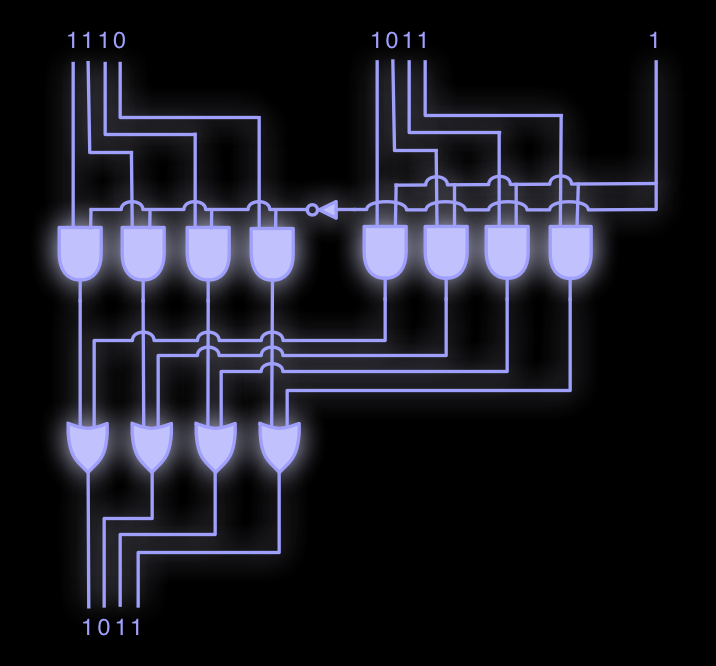Round 3: Combinational logic

(A 2-to-1 multiplexer circuit for two 4-bit buses.)
Learning objectives
In this round you will learn …
… that binary logic gates form the basis of digital computing
… that logic gates can be combined to yield combinational logic
… the principle of bottom-up design
to start with simple designs and gradually evolve them towards larger and more ambitious goals
to simultaneously build up both the designs and your software tools to shape the designs
the practice of testing (“playing with”) your design, one functional unit at a time
… to use software simulation as a tool to study a concept or a design
… the notions of
specification (“what is it that must be done?”) and
implementation (“exactly how is it done?”)
… the usefulness of encapsulating an implementation behind an interface
… that combinational logic admits configurability by separating data and control
… to use combinational logic to carry out simple operations on words
(Material that is marked with one or more asterisks (*) is good-to-know, but not critical to solving the exercises or passing the course.)